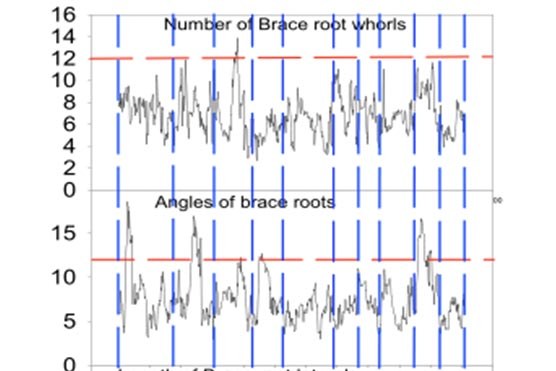The long-term goal of this project is to use genome-wide approaches to identify genes responsible for root system architecture (RSA) traits.

Genetic control of root architecture
PI: Philip Benfey
coPIs: Herbert Edelsbruner, John Harer, Leon Kochian, Jonathan Lynch, Joshua S. Weitz, Daniel Williams
Funding Source: NSF
The long-term goal of this project is to use genome-wide approaches to identify genes responsible for root system architecture (RSA) traits. Differences in RSA among genotypes of the same species are strongly associated with variation in responses to environmental stresses such as drought and poor soil fertility. Given their importance, surprisingly little is known about RSA traits or the genes that regulate them. The two principal obstacles to understanding the genetic basis of RSA are 1) the lack of cost-effective methods for non-invasively imaging growing roots and 2) the lack of adequate means of describing the complex spatial structure of RSA.
Building on a successful PGRP-funded proof-of-concept project, two non-invasive imaging technologies will be used to acquire images of growing rice and maize roots under different environmental conditions. Response of root systems grown in defined substrates will be compared to responses when grown in soil under similar conditions. Mathematical descriptors and simulations for comparative analysis of RSA will be developed. Quantitative trait loci (QTL) for RSA traits will be identified using recombinant inbred lines of rice and maize. Major effect QTL gene candidates will be identified through association mapping and efforts will be initiated toward isolating genes of significance to plant breeding.

